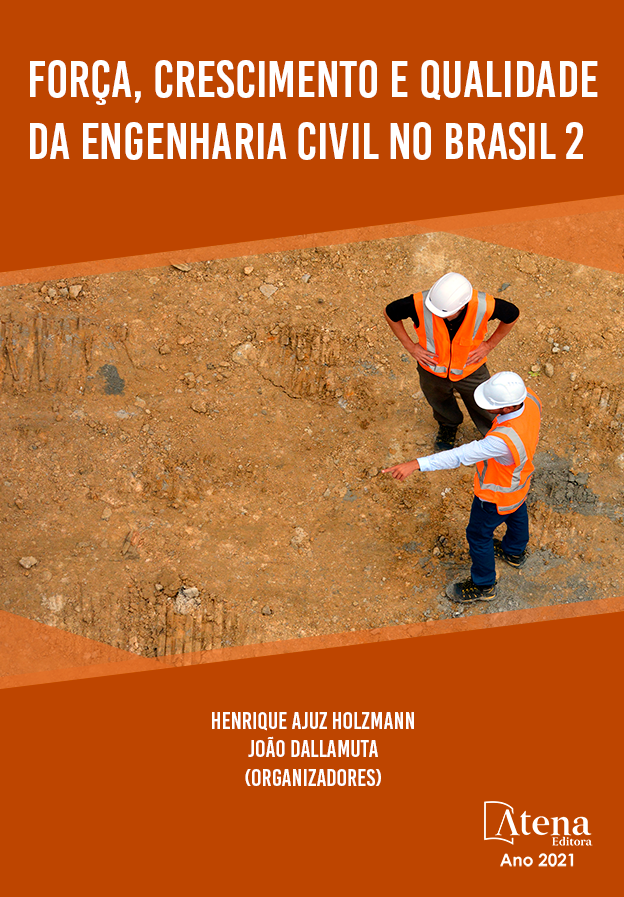
APLICAÇÃO DE REFORÇO TRANSVERSAL CONTÍNUO EM VIGAS DE CONCRETO ARMADO: COMPARAÇÃO COM ESTRIBOS CONVENCIONAIS
O estribo contínuo, daqui em diante referido como CTR, consiste em armadura de aço dobrada industrialmente para satisfazer o espaçamento especificado no projeto estrutural. O CTR tornou-se objeto de interesse por ser uma alternativa aos estribos convencionais em projetos de concreto armado. Este produto inovador é semelhante ao espiral circular, mas tem uma secção transversal retangular. O aço é dobrado nas dimensões especificadas e comprimido para ser transportado. O CTR é desatado no canteiro de obras, o que permite sua expansão para o espaçamento necessário. Este processo proporciona uma redução no tempo e no consumo de mão-de-obra durante a montagem das armaduras. O objetivo deste trabalho foi comparar o desempenho do CTR com o estribo convencional em vigas de concreto armado. Para isso foram moldadas 18 vigas com dimensões de 10 cm de largura, 15 cm de altura e 55 cm de comprimento. Estas vigas foram divididas em seis grupos de três exemplares. Foram moldados dois grupos de controle, sendo um onde as vigas não apresentavam armadura transversal e um grupo com armadura convencional com estribos com espaçamento de 7,5 cm. Nos demais grupos foram testados CTR com espaçamentos de 7,5 cm, 5,0 cm e 10 cm. As vigas foram carregadas com incremento de carga de 300 kgf até a ruptura. Foi determinada a flecha para cada nível de carregamento das vigas. Também se anotou o aparecimento da primeira fissura. Para análise dos resultados empregou-se análise de variância e Teste-t na comparação entre as diferentes combinações. Como resultados observou-se que houve diferença significativa entre as cargas de ruptura das vigas do grupo de controle onde não havia armadura transversal comparada aos demais grupos. Contudo não foi encontrada diferença significativa entre os demais grupos. O desempenho da armadura com estribos convencionais e com CTR com os diferentes espaçamentos foram equivalentes.
APLICAÇÃO DE REFORÇO TRANSVERSAL CONTÍNUO EM VIGAS DE CONCRETO ARMADO: COMPARAÇÃO COM ESTRIBOS CONVENCIONAIS
-
DOI: 10.22533/at.ed.8952108025
-
Palavras-chave: cisalhamento; estribo contínuo; concreto armado.
-
Keywords: shear; continuous transverse reinforcement; reinforced concrete.
-
Abstract:
The continuous stirrup, hereinafter referred to as CTR, consists of an industrially bent steel armature to satisfy the spacing specified in the structural design. CTR has become an object of interest because it is an alternative to conventional stirrups in reinforced concrete projects. This innovative product is similar to circular spiral but has a rectangular cross-section. The steel is folded in the specified dimensions and compressed to be transported. The CTR is untied at the construction site, which allows it to expand to the required spacing. This process provides a reduction in the time and the consumption of labor during the assembly of the reinforcements. The objective of this work was to compare the performance of CTR with the conventional stirrup in reinforced concrete beams. For this, 18 beams were molded with dimensions 10 cm wide, 15 cm high and 55 cm long. These beams were divided into six groups of three. Two control groups were molded, one where the beams did not have transverse reinforcement and a group with conventional reinforcement with stirrups with spacing of 7.5 cm. In the other groups, CTR were tested with spacing of 7.5 cm, 5.0 cm and 10 cm. The beams were loaded with a load increment of 300 kgf until rupture. The arrow was determined for each loading level of the beams. The first fissure was also noted. For the analysis of the results we used analysis of variance and Test-t in the comparison between the different combinations. As results it was observed that there was a significant difference between the burst loads of the beams of the control group where there was no transverse reinforcement compared to the other groups. However, no significant difference was found between the other groups. The performance of the reinforcement with conventional stirrups and with CTR with the different spacings were equivalent.
-
Número de páginas: 23
- Abrahão Bernardo Rohden
- Lúcio Flávio da Silveira Matos
- Andrei Lucas Müller


